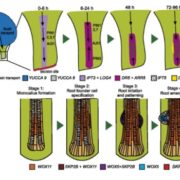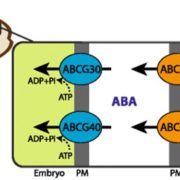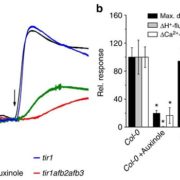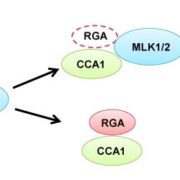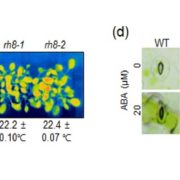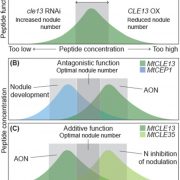The PILNCR1-miR399 regulatory module is important for low-phosphate tolerance in maize (Plant Physiol.)
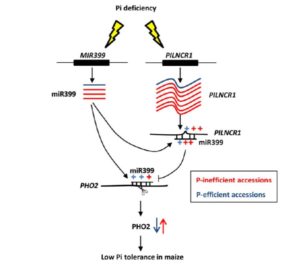 Nearly ten years ago, microRNA 399 (miR399) was recognized as a regulator of phosphate (Pi) homeostasis. miR399 expression is induced upon low Pi conditions, and, in Arabidopsis, rice, soybean and barley, miR399 suppresses PHO2, a negative regulator of Pi uptake. Du, Wang, Zou et al. found that contrary to previous indications, PHO2 is also a target for miR399 in maize. Interestingly though, in response to low Pi conditions the transcripts of ZmPHO2 were downregulated in P-efficient lines but up-regulated in P-inefficient lines. The authors identified a long non-coding RNA, PILNCR1, with a complementary region to miR399 that is highly expressed in P-inefficient accessions. The authors propose that this long non-coding RNA inhibits miR399-guided cleavage of PHO2, affecting tolerance to low Pi. (Summary by Mary Williams) Plant Physiol. 10.1104/pp.18.00034
Nearly ten years ago, microRNA 399 (miR399) was recognized as a regulator of phosphate (Pi) homeostasis. miR399 expression is induced upon low Pi conditions, and, in Arabidopsis, rice, soybean and barley, miR399 suppresses PHO2, a negative regulator of Pi uptake. Du, Wang, Zou et al. found that contrary to previous indications, PHO2 is also a target for miR399 in maize. Interestingly though, in response to low Pi conditions the transcripts of ZmPHO2 were downregulated in P-efficient lines but up-regulated in P-inefficient lines. The authors identified a long non-coding RNA, PILNCR1, with a complementary region to miR399 that is highly expressed in P-inefficient accessions. The authors propose that this long non-coding RNA inhibits miR399-guided cleavage of PHO2, affecting tolerance to low Pi. (Summary by Mary Williams) Plant Physiol. 10.1104/pp.18.00034


